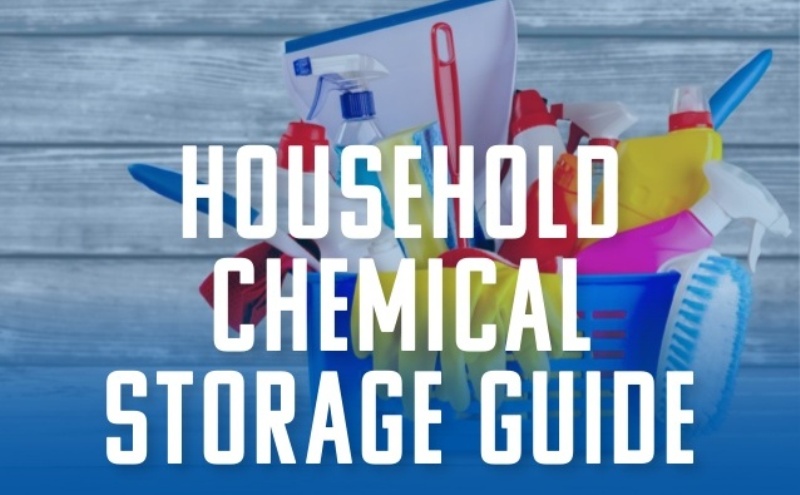Mention tidiness and cleaning products in any setting, and you’re going to hear groans. But when potentially hazardous chemicals are involved, you don’t have the luxury of putting off the dirty work. Just ask any working mom or military spouse, and she will tell you that household chemical storage is as important as it is complicated — especially if children are involved.
With household chemical storage, there’s no cut-and-dried “right way” to get it done. Rather, it takes a patchwork of solutions. Your top priority is to foster an environment of safe storage and handling — one in which children can’t easily access what they’re not supposed to have.
Here are some considerations when it comes to safety and household chemicals.
1. Balance accessibility with caution
One of the most challenging aspects of household chemical storage is determining exactly how much “security” any given chemical needs. Surface cleaners, for example, should be kept out of tiny hands, but it doesn’t always make practical sense to lock an everyday cleaning agent in the same storage closet as you might for paint thinners or antifreeze.
On the flip side of that argument, you don’t want to throw your hands in the air and just keep all of your commonly used household chemicals under the sink. It takes a clear, practical mind to determine what goes where, and it takes discipline to see it through. Start with a priority chart to determine what you’re using most often and what you should be able to easily access. Then flag any exceptions that should be locked away regardless. At the end of the exercise, you should be able to roughly judge how easily a chemical should be accessed.
2. Use clear labels
Pretty much any household chemical will have product details and safety information. It just might not be that easy to identify at first sight. Remember that brands, by their nature, are tools for marketing. The first image or phrase you see on the bottle might not tell you a lot about what’s actually inside. Even detail-oriented consumers might have a difficult time gleaning crucial safety information from a text-heavy booklet attached to the side of the container.
What to do? One idea is to use your own labels. The consistency alone — same spot on every container, same handwriting — can make the difference between safe and sloppy storage. And while the convenience of smart labeling is a time-saver for any working mom, perhaps the biggest benefit is related to safety. Young readers can see at a glance what’s in the bottle, whether it’s off limits and where the container should be. You could even color code your labels from red (danger!) to green (safe to leave out).
3. Don’t fall into the clutter trap
It’s so easy to buy a household chemical for today’s task and set it aside for later. The problem is the “later” stockpile gets more and more crowded until you’re staring at an unmanageable (and unsafe) mess. It’s far more difficult to claw your way out of the clutter than it is to avoid it in the first place.
The tips above should give you enough to start the organizing process. Designate “chemical zones” in your kitchen and bathroom. Within those zones, separate your chemicals in a way that makes sense to you so it’s easier to slip into good storage habits. You might organize by frequency of using the chemical or by the chemical’s purpose. For moms with small children, organize first and foremost by what’s safe.
4. Designate a place for kid-friendly chemicals
The best way to keep your kids out of a supply of hazardous chemicals is to not give them a reason to seek them out in the first place. How can you accomplish this? Set aside a supply of products you’re comfortable with your children using — mild cleaners, for example. If your child makes a mess while you’re not around, he’ll go straight for the pre-approved cleaners rather than rummaging through the dangerous ones.
But remember, even in the safe zone, make absolutely sure your child understands the risks, and keep everything clearly labeled. Unsupervised use of cleaners is never recommended, but safety zones can go a long way toward preventing an accident.
5. Know how to safely dispose of household chemicals
Not every spent household chemical can or should be tossed in with regular trash. For moms or military spouses, plenty can still go wrong once a hazardous chemical is supposedly safely in the trash can. The trash could tip over, or the liner could dissolve — and that’s before you take into account the potential environmental implications of trashing chemicals.
Many communities and municipalities offer guidance for how to safely dispose of household chemicals. That could include specially designated disposal areas, or it could be instructions for safe disposal at your home. While one goal could be to limit negative environmental impact by reclaiming chemicals, it’s just as important for working moms that hazardous cleaners and chemicals make their way out of the home without falling into the wrong hands.
The tips above are a solid framework for reducing the risk of chemical-related injury in your home, but they are just a start. Your household chemical storage system should be customized in a way that makes the most sense for you and your family. Remember to always consult the product information for safety and handling guidance, and closely monitor any children who might come into contact with cleaning products. By forcing a routine of smarter household chemical handling and storage, you can protect your family from serious harm.

Author bio: Lynn Place is Vice President of Marketing for SolvChem Custom Packaging Division. She has 30 years of professional experience in the manufacturing industry and specializes in consumer packaged goods, new product development and strategic planning.






